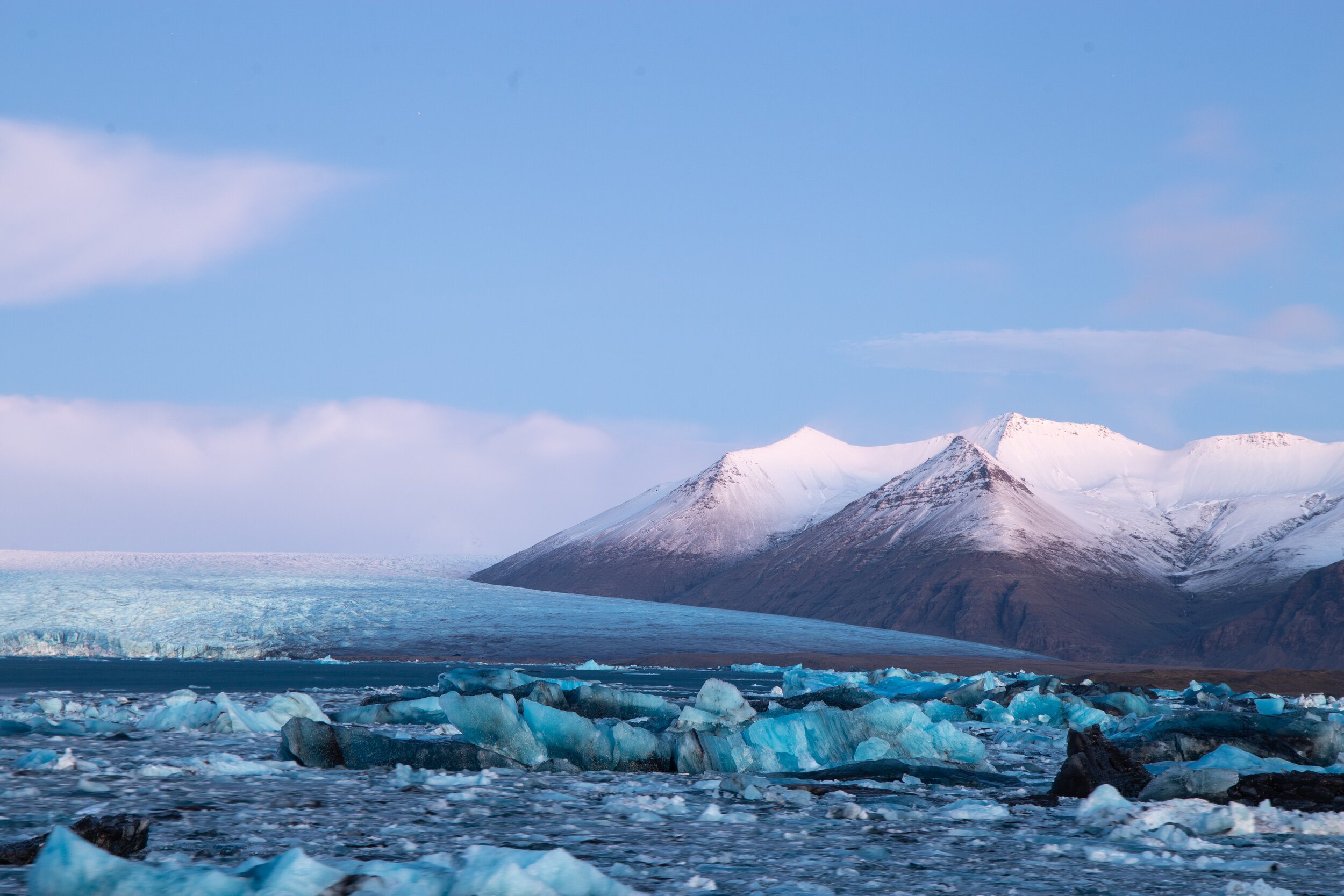The Lava Tunnel - Raufarholshellir
Lava Tunnels of Iceland
Iceland is home to around 130 volcanoes, many still active. They are usually found along the Mid-Atlantic Range - the confluence of two major tectonic plates, traversing the country from northeast to southwest. Volcanic eruptions have pretty much created Iceland, and defined its dramatic geography, leaving behind newly-formed mountains, lakes or islands, and structures such as lava fields or lava tunnels.
Lava tunnels are scattered all across the country, where powerful eruptions have occurred in the past, and can be visited.
Formation
Lava tunnels are tube-like pathways left behind by flowing lava, thousands to millions of years ago. Lava usually leaves the point of eruption as channels - something that is quite visible in any photo of the recent Fagradalsfjall eruption. The channel surrounding cool first, while the inside remains hot and continues flowing. Walls are effectively formed, creating an insulating tube for the hot lava. The gas emitted by the volcanic activity within the cavities support the newly formed structure. When the lava eventually drains away, it leaves behind a hollow natural conduit - this is a very long process.
Lava tunnels are unique spaces with colourful mineral deposits and interesting rock formations.
The Lava Tunnel
Raufarholshellir is one of the largest and most famous lava tubes tunnels in Iceland, and one of the most easily accessible - just a short drive from the capital. Most visitors will struggle with Raufarholshellir, but this lava tunnel also goes by the name The Lava Tunnel - so you’d think, of all lava tunnels, this is the one you should visit.
Raufarholshellir is 4th longest lava tunnel in Iceland (1.4 km long), 10m high, 10-30m wide. It features multiple skylights in the ceiling, which shine some natural light into the first portion of the cave. The lava tunnel formed about 5200 years ago, during the Leitahraun eruption.
Until 2016, this cave was open to the public as a free and unmanaged attraction. However, it had to close down, due to people littering and disrespecting the place by damaging rock formations, including most of the fragile lava straws. A year later, after undergoing significant restoration, complete with pathway and light system, the cave reopened and visitors can explore this underworld once again, by guided tour.
Getting There
Raufarholshellir is located in the Reykjanes Peninsula, 35km away from the capital, and is therefore easily accessible.
If you have your own car, it’s a 30min drive from Reykjavik, or a 1h drive from Keflavik Airport.
There is also the option to book a tour with transport included. The return transportation by bus from Reykjavik is an additional 5,000 ISK / person to the tour cost.
When to Visit
Raufarholshellir can be visited all year round.
During winter, snow would fall through the skylights and accumulate inside the cave, creating a beautiful image.
Tickets
The Lava Tunnel is something you would do at the start of your day. Standard tours take place in the morning and last 1h. The first tour starts at 09:00, and, if there is demand, they follow-up with additional tour slots on the hour (10:00, 11:00).
The cost per person for the standard tour is 6,900 ISK if you self-drive, or 11,900 ISK with transportation from Reykavik.
Most people end up taking the standard tour, but if you are passionate about caving, more extensive tours are available upon request. This tour would take you deeper into the tunnel and last 3-4h (at a cost of 19,900 ISK / person).
You don’t have to book your ticket in advance, but it might be a good idea to do that, especially during the high season, to guarantee a spot on your preferred day. Booking is easy and may be cancelled up to 24h in advance without penalty.
You can book your tour directly on their website.
The Tour
The tour itself is very informative and interesting.
In the context of the recent volcanic eruption in Iceland, we really wanted to see for ourselves what a lava tunnel is like. Our guide was very knowledgeable, but also had a great sense of humour, which made the entire experience all the more memorable - I can’t remember her name, but she was one of our favourite guides in recent memory. We had a great time and learnt lots of interesting facts about Iceland, volcanoes and lava tunnels, that I still remember months later.
The walk along the lava tunnel is done on a metal walkway, with the occasional stairs. The journey is relatively short and not difficult at all, suitable for anyone.
Keep in mind that the temperature inside the cave is 0-4°C. Even if it’s nice outside (though not very likely in Iceland), bring your jacket, and maybe some gloves. Helmets with lights are provided, so the hat is optional.
Other Lava Caves in Iceland
Leidarendi
Reykjanes, 25min drive from Reykjavik
can visit with a guide or on your own (bring appropriate equipment)
Thrihnjukagigur
Reykjanes, 25min drive from Reykjavik
descend into dormant volcano in an open cable lift
5-6h guided tour, 44,000 ISK / person
website
Vatnshellir
Snaefellsnes Peninsula
1h guided tour, 4,500 ISK / person
website
Vidgelmir
Husafell, 2h drive from Reykjavik
also The Cave, largest lava cave in Iceland
1.5h guided tour, 7,000 ISK / person
website
Surtshellir
Husafell, 5km away from Vidgelmir Cave
longest lava tunnel in Iceland (almost 2km)
free to enter (bring appropriate equipment)
Lofthellir
Myvatn, 1h20min drive from Akureyri
known for its natural ice sculptures
4-5h, 27,500 ISK / person
website












Probably the most beautiful waterfall in Iceland